The link below is to an article that takes a look at 5 free webcomic apps.
For more visit:
https://www.makeuseof.com/free-webcomic-apps-to-discover-and-read-comic-strips-online/
The link below is to an article that takes a look at 5 free webcomic apps.
For more visit:
https://www.makeuseof.com/free-webcomic-apps-to-discover-and-read-comic-strips-online/
The link below is to an article that covers (pun intended) bad book covers.
For more visit:
https://lithub.com/50-very-bad-book-covers-for-literary-classics/
The link below is to an article that takes a look at 50 classic novels under 200 pages.
For more visit:
https://lithub.com/50-great-classic-novels-under-200-pages/
The link below is to an article that looks at the best crime reads of 2020.
For more visit:
https://crimereads.com/the-best-international-crime-novels-of-2020/
Jessica Gannaway, University of Melbourne and Melitta Hogarth, University of Melbourne
This article is part of three-part series on summer reads for young people after a very unique year.
US teenager Trayvon Martin was shot dead in 2012 by a neighbourhood watch volunteer, George Zimmerman who was later acquitted of the murder. This saw the rise of the Black Lives Matter movement. The racist social and political issues in the US saw the deaths and violence on Black bodies brought front and centre through acts of protest.
The arguments against the alleged police brutality in the US were easily translatable to the Australian context.
The Black Lives Matters movement was renewed following the death of George Floyd at the hands of Minneapolis police officers in May this year. And together with US counterparts, tens of thousands of Australians marched across our cities to draw attention to racial profiling, police brutality and the more than 400 Indigenous people who have died in police custody since a royal commission into the problem was held in 1991.
The global movement brought unprecedented sales of books about race and anti-racism. This turn toward texts is indicative of the role they play in helping us make sense of major social issues.
Angie Thomas, author of the 2017 bestseller “The Hate U Give”, has spoken about the role of literature in igniting awareness, resistance and change.
I think books […] play a huge role in opening people’s eyes and they’re a form of activism in their own right, in the fact that they do empower people and show others the lives of people who may not be like themselves.
Research has long shown a link between the books we read and our development of empathy. But more recent research has highlighted it is important we don’t see books as immediate fixes to complex social issues, especially when we import these books from other locations and times.
Our reading must be accompanied by close attention to the ways racism and prejudice unfold in our own location.
Read more:
5 Australian books that can help young people understand their place in the world
Coming to understand the impact and complexity of racism in this way is referred to as “racial literacy”. Here are five books that can help young people build racial literacy around the varied forms of racism and discrimination.
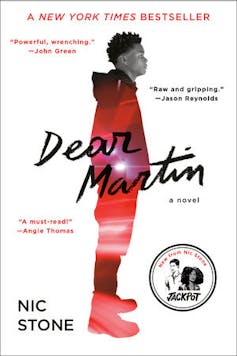
by Nic Stone
Dear Martin explores issues of race through the eyes of conscientious 17 year old, Justyce McAllister.
Built around the central question, “What would Martin (Luther King) do?”, this novel brings to light the litany of decisions and ethical conundrums thrust into Justyce’s lap daily, as he navigates a world affected by racism and prejudice.
by Ibi Zobai and Yusuf Salaam
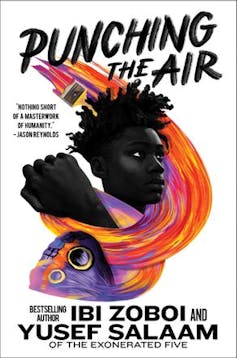
In 1989, five young men were falsely accused of the assault and murder of a jogger in New York’s Central Park. Now documented in Ava Duvernay’s Neflix miniseries When They See Us, the Five were exonerated 12 years later.
But the story stands as a haunting reminder of the inequalities experienced by Black men and the life-altering consequences this can wreak on innocent lives.
One of these young men, Yusuf Salaam, collaborates with award-winning author and prison reform activist Ibi Zobai, to craft a story that examines these themes through a narrative of a wrongfully incarcerated young man navigating his teenage years in prison.
edited by Anita Heiss

This anthology of 50 chapters provides an opportunity to deeply listen and understand the lived experiences of Indigenous Australians and the ways racism takes all manner of overt, subtle and systemic forms.
Particularly noteworthy are the chapters by Ambelin Kwaymullina and Celeste Liddle, in which the authors describe both the nature of racism experienced by them from the schoolyard, and the broader historical context on which this racism is based.
by Brittney Morris

This novel centres on 17-year-old Kiera, a talented young developer who creates a multiplayer role-playing game. The game is a “mecca of black excellence” and an escape from the racism often experienced by those “game-playing while black”.
When an offline murder is traced back to the game, Kiera grapples with the complexity of both the implications of her creation and the conversations it triggers.
Slay weaves social commentary into the dialogue between characters from all walks of life, covering everything from cultural appropriation, to whether racism can ever be “reversed”.
by Ambelin Kwaymullina
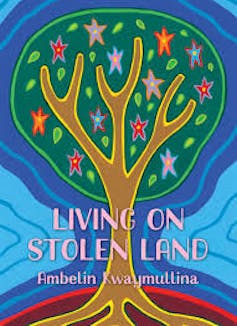
Many books here centre around the kind of racial stereotyping and violence that put the Black Lives Matter movement on the map. But understanding racism in the Australian context also involves examining colonialism and the racist underpinnings of our history.
Living on Stolen Land centres Indigenous sovereignty in the conversation about race. Using prose verses such as those titled “Bias” and “Listening”, it leads readers through examining unconscious beliefs and moving toward being a genuine ally of Indigenous people.
Author and educator Layla F Saad has suggested when we read texts about social issues like racism, we read for transformation, not merely information.
A range of texts have been developed to support families in having these transformative discussions together. Maxine Beneba Clarkes’ “When We Say Black Lives Matter”, for instance, is a beautifully illustrated picture book that focuses on the strength and resilience of black children and communities. While texts like Our Home our Heartbeat by Adam Briggs centres on key Indigenous figures to be celebrated.
Read more:
Teen summer reads: 5 novels to help cope with adversity and alienation
![]()
Jessica Gannaway, Lecturer, University of Melbourne and Melitta Hogarth, Assistant Dean Indigenous/ Senior lecturer, University of Melbourne
This article is republished from The Conversation under a Creative Commons license. Read the original article.
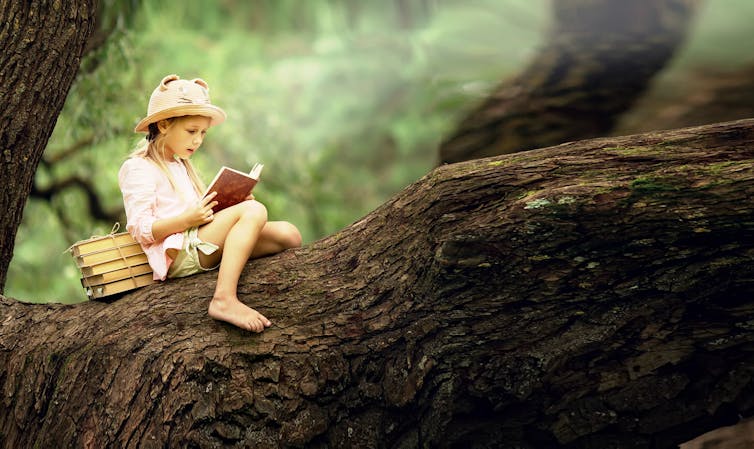
Tatiana Bobkova/Shutterstock
Peter Martin, Crawford School of Public Policy, Australian National University
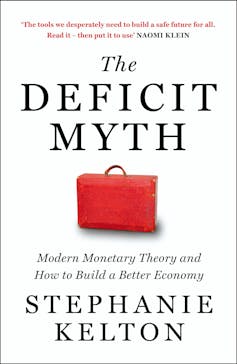
Stephanie Kelton, Hachette Australia
No book prepared ahead of time better targeted the year in economics.
Just as governments including Australia’s were embracing debt (A$800 billion and counting) and creating money out of nowhere ($200 billion scheduled) came a treatise explaining that at times like these (actually, at any time when the resources of the economy aren’t fully employed) that’s entirely responsible.
Stephanie Kelton’s book has rightly been displayed on Alan Kohler’s desk, and Kohler himself has become a convert to modern monetary theory which the book outlines in the clearest of terms.
Kelton explains that in an economy such as Australia’s the purpose of tax isn’t to raise money but to slow spending, and something else: demanding the payment of tax in Australian dollars forces Australians to use Australian dollars.
The example of teenagers not cleaning up around the house that she used in her talk at Adelaide University in January is priceless. You can watch the video here.
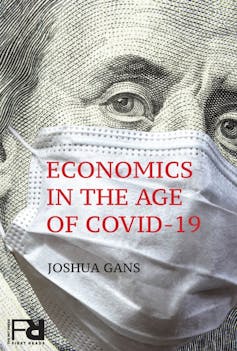
Joshua Gans, MIT Press
Written as we were coming to grips with what to do, and posted online chapter by chapter to get real-time feedback, the Australian author’s flash of inspiration was that we have experience in shutting down an economy and then restarting it.
We do it every Christmas writes Joshua Gans, and “no-one screams depression”.
That his way of seeing things now dominates talk about the pandemic doesn’t make it less radical. It’s partly because of his insights, published in April, that most governments no longer think that in this crisis they can trade off health against wealth.
He persuades by analogy. Fans of Mission Impossible II, the computer game Plague Inc and the came of chess will appreciate the references.
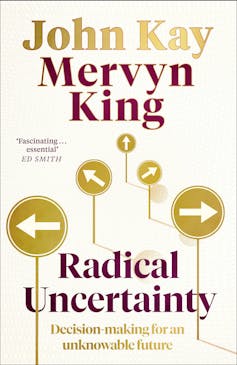
Mervyn King, John Kay, Hachette Australia
The idea that every possibility can be reduced to a number, to a probability, is what makes simple mathematical economics work. It’s what makes insurance and credit ratings and assessments of the risk of getting coronavirus work. And it is wrong, as became clear in the devastation caused by the global financial crisis.
By itself, that’s not a particularly useful observation, but what is useful is the author’s discovery of where the idea that probability could be reduced to a simple number came from. The Nobel Prize winning economist Milton Friedman shares much of the blame. He insisted that every uncertainty could be reduced a number that a rational utility-maximising human being could use to make decisions.
Before Friedman and contemporaries, there used to be two numbers, one representing risk, and the other representing uncertainty, which are quite different things and can’t be thrown together.
If you’re too busy for the book, try the London School of Economics podcast.
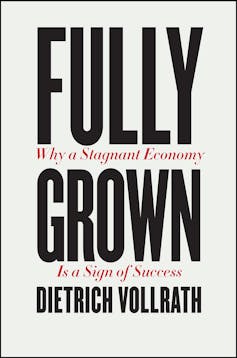
Dietrich Vollrath, University of Chicago Press
Advanced economies may or may not roar out of the recession, but they are unlikely to boom as they did before. For decade after decade throughout the 1900s annual economic growth has been strong, averaging 2% per capita in the US.
In the first two decades of the 2000’s that growth has been weak, averaging 1% – only half of what it did.
Dietrich Vollrath, who blogs on growth and had no preconceptions, approached the puzzle as a mystery and found that the usual suspects (rising inequality, slower innovation, competition from China) didn’t explain enough.
The extra comes from success. The populations of the US and kindred nations have become so rich and (on average) old that having more children and striving for even higher incomes no longer makes sense.
The technical stuff is at the back. The message from the front is that we’ve arrived at our destination, which needn’t be a bad thing.
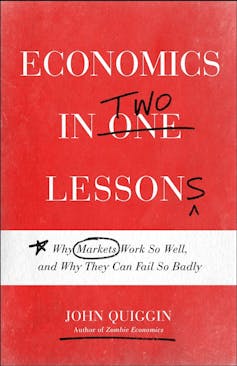
John Quiggin, Princeton University Press
I’ve slipped this one in from 2019 for a reason. John Quiggin is about to publish a sequel, The Economic Consequences of the Pandemic.
Economics in One Lesson, published in 1946 financial journalist Henry Hazlitt, was a homage to the power of prices in a free market.
In lesson one (the first half of the book) Quiggin teases out Hazlitt’s thinking, and in lesson two shows how it follows from it that in many circumstances the market has to be contained.
Central to both lessons is opportunity cost, “what you give up in order to get something”, the most important concept in economics.
Polluters will make the wrong decisions if the cost of their pollution (largely borne by others) isn’t charged for. It’s a persuasive and increasingly-pressing argument.![]()
Peter Martin, Visiting Fellow, Crawford School of Public Policy, Australian National University
This article is republished from The Conversation under a Creative Commons license. Read the original article.

Jessica Gildersleeve, University of Southern Queensland
Summer is the time for holidays and travel. But as we weakly wave goodbye (we hope) to the horrors of 2020, international travel is off the table and even domestic travel is still restricted.
A book is still your most faithful companion on summer journeys, even if that trip is limited to the journey between the kitchen and a sun lounge in the backyard.
Curated here is a mix tape of great literary road trips. There is one oldie but goodie, some 21st-century hits and shout-outs to the authors who mapped the way. Buckle up — or curl up — and enjoy.
Read more:
Friday essay: Alice Pung — how reading changed my life
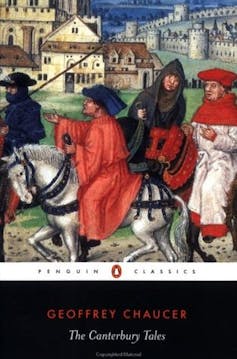
Our journey begins with The Canterbury Tales, one of literature’s earliest road trip narratives, although Chaucer’s work takes its lead from Giovanni Bocaccio’s Decameron (c. 1353).
A series of stories told by a group of travellers, in Chaucer’s Middle English, takes readers on a pilgrimage to the shrine of Saint Thomas à Becket in Canterbury. Indeed, the pilgrimage can be seen as the earliest form of today’s holiday (a “holy day”), in which the faithful would journey for days or even weeks to visit a holy site. The physical demands of the travel itself contributed to the pilgrim’s spiritual growth.
Each pilgrim of The Canterbury Tales represents a different class or social position — the knight, the priest, the merchant, and so on. Additionally, each story not only represents a particular and symbolic genre — the low humour of the miller’s fabliaux, or the knight’s idealisation of the courtly love poem — but when taken together signify the interactions between people and experiences of the period.
Read more:
Chaucer’s great poem Troilus and Criseyde: perfect reading while under siege from a virus
If you enjoy The Canterbury Tales, you might also like Homer’s epic poem The Odyssey (8th C BCE) — a heroic adventure on the high seas. Likewise: Jules Verne’s Twenty Thousand Leagues Under the Sea and Around the World in Eighty Days (both first published in English in 1872), or Jonathan Swift’s satirical masterpiece, Gulliver’s Travels (1726).
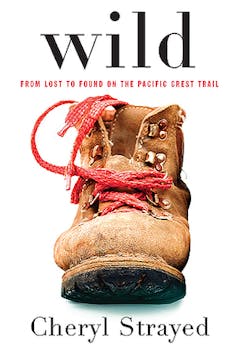
Perhaps best known for the image of Reese Witherspoon tossing her hiking boots into a canyon in the 2014 film adaptation, Cheryl Strayed’s memoir of her solo hike along the Pacific Crest Trail is an epic pilgrimage in its own right.
Just as the archetypes of The Canterbury Tales undertake both a physical and a spiritual journey, so too Strayed commits to the trail as a trip of transformation and discovery: “a world I thought would both make me into the woman I knew I could become and turn me back into the girl I’d once been. A world that measured two feet wide and 2,663 miles long”.
Wild constitutes a modern, even feminist, reimagining of the American frontier narrative — a lone journey into the “wild west”, stripped of the markers of civilisation to truly find a self-made paradise. The book echoes and subverts the classic road trip novel, Jack Kerouac’s On the Road (1957) — a compulsory addition to any literary road trip list. It also hearkens back to Mark Twain’s boyhood novel, The Adventures of Huckleberry Finn (1885), or even Vladimir Nabokov’s twisted trip in Lolita (1955).
Read more:
Mythbusting Ancient Rome — did all roads actually lead there?
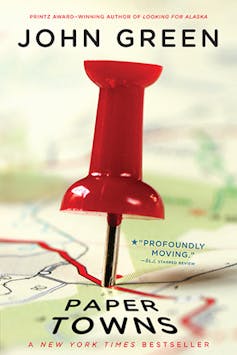
That the road trip is frequently used as a symbolic journey of understanding the self makes it ripe for the contemporary bildungsroman form — a novel of development — in the Young Adult genre. Author John Green has plumbed this trope a number of times, perhaps most successfully in Paper Towns. The acclaimed Amy & Roger’s Epic Detour by Morgan Matson (2010), or the more recent I Wanna Be Where You Are by Kristina Forest (2019) both also fall within this category.
Poised on the precarious cusp of adulthood and searching for their adventurous friend Margot, the teenaged protagonists of Paper Towns set off on a road trip through the night, determined to “right a lot of wrongs … wrong some rights … (and) radically reshape the world”. It is thus a moral journey, an effort to imprint the emerging self on a world not yet acknowledging its presence. The travellers want to make decisions about their lives, rather than be swept down a predetermined road.
Read more:
The kids are alright: young adult post-disaster novels can teach us about trauma and survival
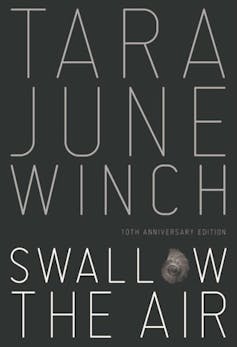
Australian road trip narratives are more often described by fear than frontierism, as in Kenneth Cook’s Wake in Fright (1961) or cinema’s Wolf Creek (2005). Similarly, Ari’s drug-fuelled trip around inner Melbourne in Christos Tsiolkas’s Loaded (1995) tracks the urban intersections of individual, national and multicultural identity.
2020 has been a triumphant year for Tara June Winch. Her earlier short story cycle, Swallow the Air won the David Unaipon Award.
With a nod to the structure of The Canterbury Tales, Winch’s stories follow the cross country journey of a young Indigenous girl, May. She is determined to escape and change the cycles of violence and misery to which her family has been subjected. Like Tony Birch’s Blood (2012), it adopts the road trip as a means of going back to Country, providing not only a specifically cultural innovation in the genre, but a different understanding of self-discovery.
Read more:
The Yield wins the Miles Franklin: a powerful story of violence and forms of resistance
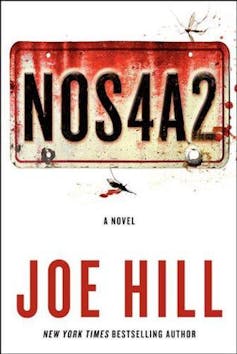
Not all road trips constitute journeys into the self. Instead, a psychological voyage might constitute a plunge into the depths of the nightmarish unconscious.
Joe Hill, son of that most famous horror writer Stephen King, offers up a road trip we might prefer not to take, although it does have a festive theme. In N0S4A2, Christmasland is the horrific and fantastic destination for the child victims of a phantom vehicle and its deranged driver.
Hill offers the chilling prophesy that “sooner or later a black car came for everyone”, pointing out the horrific inevitability of one final road trip. It’s a journey in the tradition of the monstrous vehicle, as in King’s Christine (1983), as well as the apocalyptic father-son walk in Cormac McCarthy’s The Road (2006), Josh Malerman’s Bird Box (2014), King’s The Stand (1978) and (as Richard Bachman) The Long Walk (1979).
After the year we’ve all had, I hope your road trip is less nightmarish.![]()
Jessica Gildersleeve, Associate Professor of English Literature, University of Southern Queensland
This article is republished from The Conversation under a Creative Commons license. Read the original article.

Kate Douglas, Flinders University
This article is part of our three-part series on summer reads for young people after a very unique year.
2020 has been a particularly tough year for those approaching the latter years of high school.
Young people have witnessed large-scale economic insecurity and unstable education systems. Teenagers have reported high levels of stress and anxiety. But they have also demonstrated outstanding resilience and resolve in adapting to the “new normal”.
During COVID-19, cultural texts have become more important than ever — a place to turn to for knowledge, reflection, support and escape.
Read more:
How reading habits have changed during the COVID-19 lockdown
Reading can be therapeutic for young readers during difficult times. It offers something other media doesn’t — greater social and emotional benefits. It also does more to stimulate the imagination and creates a sense of moral achievement in readers.
With this in mind, here are some summer reading ideas for older teenagers. The texts I have chosen demonstrate how young characters have coped with trauma and uncertainty.
Research suggests young people are more likely to listen to their peers than their teachers when it comes to reading recommendations.
So, I spoke to my 18-year-old son and asked him to name five types of books he would like to read over the summer.
He suggested:
Inevitably some of my selections meet more than one of his criteria.
by S.E. Hinton
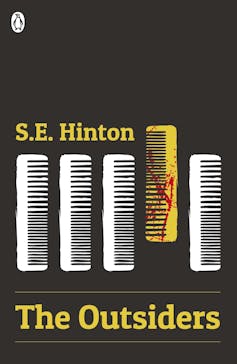
The Outsiders is thought to be one of the first novels written specifically for young adults. The coming of age novel explores the class divide between the rival Greasers and Socs gangs in the American South in the mid-1960s.
The book’s challenging and emotive representations of inequality, violence, crises of conscience, and the powerful love of family and friends, make it an enduring standout for young readers. The first-person narration constructs intimacy between the reader and our protagonist, Ponyboy Curtis, as he approaches an increasingly uncertain future.
Hinton started the book at 15, finished it at 16, and it was published when she was 18. It is said she wrote the book because it was the sort of book she herself wanted to read.
In a year when many young people have experienced isolation and separation, Ponyboy’s wisdoms should resonate powerfully:
It seemed funny to me that the sunset she saw from her patio and the one I saw from the back steps was the same one. Maybe the two different worlds we lived in weren’t so different. We saw the same sunset.
by Joy Harjo

Cherokee, Creek painter, musician and US Poet Laureate, Harjo wrote her memoir when she was 61.
Crazy Brave recalls her early life from birth to her early 20s. The story is abstract and non-linear in structure, making the memoir unpredictable, which destabilises the reader’s experience.
Harjo’s memoir is confronting and, at times, graphic. But her spiritual connections, and trust of her own “knowing” (instinct, or inner vision) will inspire readers keen to escape problematic right or wrong, or black and white perceptions of experience. As Harjo astutely observes:
In the end, we must each tend to our own gulfs of sadness, though others can assist us with kindness, food, good words, and music. Our human tendency is to fill these holes with distractions like shopping and fast romance, or with drugs and alcohol.
by Jessie Tu

28-year-old Tu’s debut novel presents 22-year-old violinist child prodigy Jena Chung. We follow Jena’s sense of alienation and detachment as she attempts to find meaning in the world.
Lonely Girl is not a fun read, but it is a timely one. We need to see more Asian-Australia women’s voices in literature because of the important provocations they make about race and misogyny in Australia. Tu wanted this novel to be a conversation starter and it certainly is.
Tu’s is a powerful intervention young readers will appreciate. It is a book about making bad choices while feeling so much pressure to be “good”:
I throw myself into things, expecting always to get what I want. And I always get what I want. Now it feels like I’ve failed all over again. Only this time there’s no motivation behind it. I’ve just failed myself, and it hurts in a strange, unfamiliar way. The wound is deeper than anything I’ve ever felt.
This novel contains graphic representations of sex. It is recommended for readers 17 and over.
by Ewa Ramsey
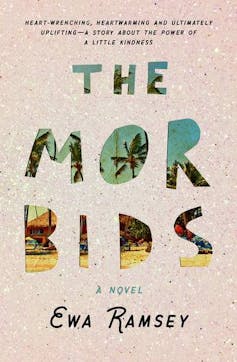
This is a wonderfully compassionate book about living with anxiety caused by our 20-something protagonist Caitlin’s fear of death. The Morbids explores the value of friendship and romance amid youthful fears and phobias.
Ramsey’s debut novel is a difficult read. The style of the novel (fragmented, sometimes repetitive language) attempts to bring the reader closer to the experience of mental illness. But the characterisations are warm and the moral is ultimately hopeful.
It’s a book about therapy and letting people in when it is the last thing you feel like you can do, because “Sometimes you need to give up on death … to have the time of your life”.
by Becky Albertalli
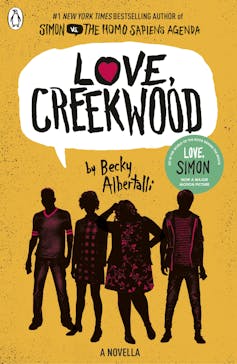
Not exactly a throwback, but if you enjoyed Simon vs the Homosapiens Agenda as much as my teens and I did, here is the latest instalment of the Simonverse.
Love, Creekwood is a short epistolary romance novella (the story is narrated via the characters’ emails to each other). It is “part 3.5” in the series and functions as an epilogue.
Love, Creekwood follows the characters to college and we follow the progression of two same-sex relationships. The book explores the challenges of being too close and too far away from a partner. It explores the mental health struggles often triggered by loneliness and fear.
Love, Creekwood is a light-hearted but genuine representation of what the first year of university can feel like.
As Simon explains:
When we say we want to freeze time, what we mean is that we want to control our memories. We want to choose which moments we’ll keep forever. We want to guarantee the best ones won’t slip away from us somehow. So when something beautiful happens, there’s this impulse to press pause and save the game. We want to make sure we can find our way back to that moment.
Albertalli is donating all proceeds from the sale of this novella to The Trevor Project, an organisation committed to crisis and suicide prevention for LGBTQIA youth.
Read more:
Teen summer reads: how to escape to another world after a year stuck in this one
The author would like to thank to Katerina Bryant, Kylie Cardell, Joshua Douglas-Spencer and Emma Maguire for sharing ideas for this article.![]()
Kate Douglas, Professor, Flinders University
This article is republished from The Conversation under a Creative Commons license. Read the original article.
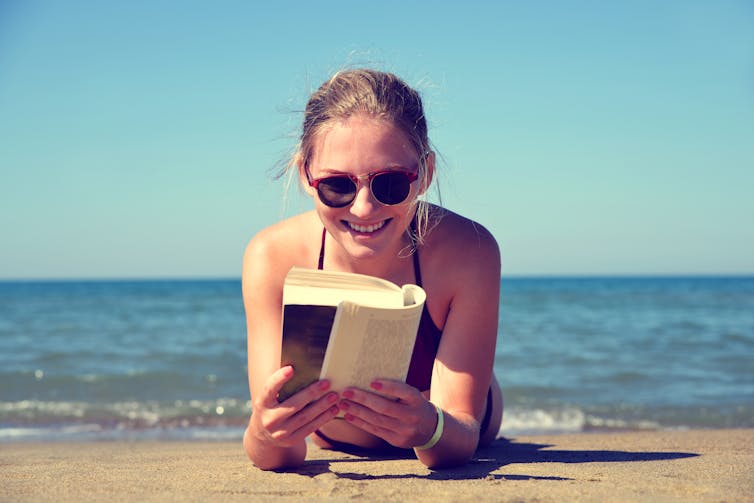
Troy Potter, University of Melbourne
This article is part of three-part series on summer reads for young people after a very unique year.
As this tumultuous year comes to a close, the Australian summer is an ideal time to relax and escape through reading.
Like many people, Australian teenagers have experienced higher rates of psychological distress this year as a result of the COVID pandemic. Reading is one way for teens to remove themselves, if only temporarily, from their current stresses.
As fantasy writer Neil Gaiman said:
Books make great gifts because they have whole worlds inside of them.
Young adult novels also present alternative ways of being and resolving crises. This is because a defining characteristic of young adult books relates to power. In novels for young adults, teen protagonists learn how to use their power to navigate social situations, whether in families, schools, their community or, indeed, other worlds.
In this way, young adult literature can be considered both a form of escapism and empowerment.
According to Teen Reading in the Digital Era — a study conducted by Deakin University — teenagers have diverse reading preferences. The study identified five of these: fantasy, contemporary realist fiction, science fiction, autobiography or biography, and action or adventure.
With this in mind, here are some recommendations for your teen’s summer reading to help them both escape and, hopefully, re-empower themselves.
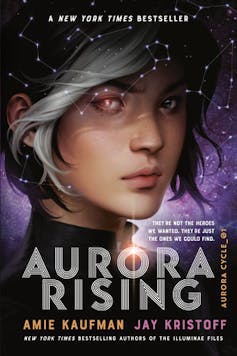
by Amie Kaufman and Jay Kristoff
Teenagers who feel they’re finally emerging from a tough year of restrictions may empathise with Aurora Jie-Lin O’Malley, who has woken up from a 200-year cryosleep (where your body is cooled down and preserved in liquid nitrogen) to find herself in the year 2380.
Aurora secretly joins a group of graduating cadets on their first mission. What should be a simple cargo run ends up being a cat-and-mouse chase across the galaxy. In trying to find her place in a new universe, Aurora and the cadets uncover an ancient alien species who has spent millions of years preparing to take over the galaxy.
Told from the perspective of each of the seven teenage protagonists, the Aurora Cycle is a new action science-fiction series. It currently comprises the books Aurora Rising (2019) and Aurora Burning (2020).
Other intergalactic action-adventure sci-fi books teenagers may enjoy include A Confusion of Princes (2012) by Garth Nix, Mindcull (2019) by K. H. Canobi, and Kaufman and Kristoff’s earlier series, The Illuminae Files (2015–2016).
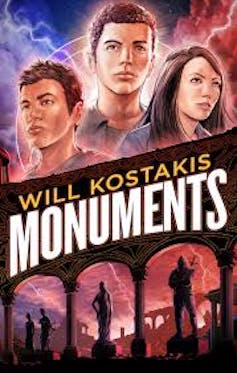
by Will Kostakis
A scavenger hunt for buried gods may be just the thing teenagers need to get their minds moving. In this urban fantasy duology, Connor learns about the Monuments — powerful gods who have hidden themselves to protect humanity.
Joined by Sarah and Locky, Connor searches across contemporary Sydney, trying to uncover the gods. However, despite their awesome powers, the Monuments need protecting, too. The problem is Connor doesn’t know who he can trust with the knowledge and power of the gods.
This is author Will Kostakis’ first foray into the fantastical.
Other fantasy novels for teenagers to get lost in include the bewitching The Last Balfour (2019) by Cait Duggan; Four Dead Queens (2019) — a murder mystery by by Astrid Scholte; and the Old Kingdom series (1995–2016) by Garth Nix.
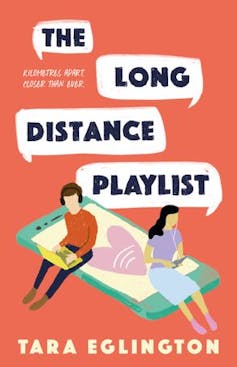
by Tara Eglington
Having spent more time on a screen this year than before, what better way for teenagers to re-engage with novels than to read one that’s written in instant messenger, text, emails, prose and playlists?
Eglington’s fourth young adult novel centres on teenagers Taylor and Isolde, who live in Wanaka (New Zealand) and Sydney, respectively. Friends since childhood, the two reconnect across the Tasman after an 18-month long fight.
As they exchange cross-country messages over the course of the year, they help support each other through their ordeals and, in doing so, realise relationships can develop over distances.
Two more realist young adult novels in which teenagers connect with others include 19 Love Songs (2020) by David Levithan and It Sounded Better in My Head (2019) by Nina Kenwood.
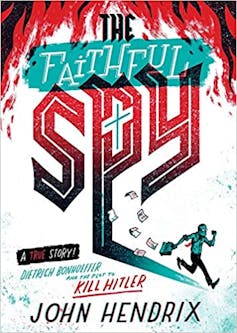
by John Hendrix
Teenagers who prefer to read about the lives of others may be interested in this graphic biography. It tells the story of Dietrich Bonhoeffer, a German theologian who resisted the Nazi regime and was associated with the plot to kill Hitler.
Using a red-black-teal colour scheme, the mixture of text and illustration details Bonhoeffer’s life and outlines the larger historical context of Hitler’s rise to power and the second world war. Cited material is asterisked, and a select bibliography and limited notes are included.
A graphic autobiography (about a girl growing up during the Iranian Revolution) teenagers may also enjoy is Persepolis (2000) by Marjane Satrapi.
Read more:
5 Australian books that can help young people understand their place in the world
For other lists of recommended young adult novels, check out the CBCA’s notables or Inside a Dog, a website for teens to share reviews, recommendations and their own creative writing.![]()
Troy Potter, Lecturer, The University of Melbourne, University of Melbourne
This article is republished from The Conversation under a Creative Commons license. Read the original article.
The link below is to an article that looks at the best books of 2020 according to Amazon.
For more visit:
https://bookriot.com/amazon-best-books-of-2020/
You must be logged in to post a comment.